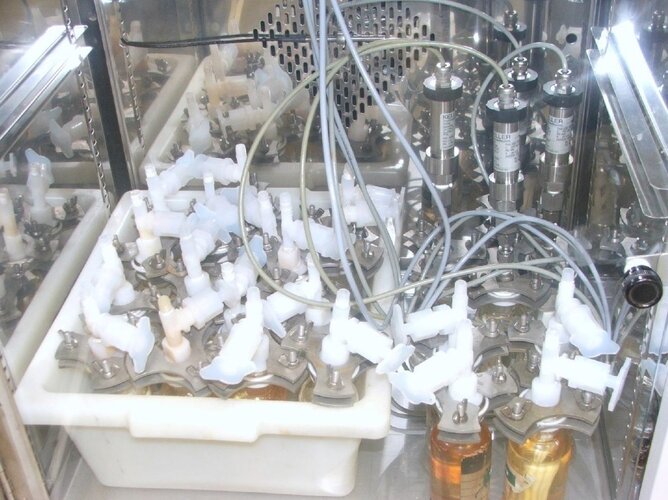Candidate ‘green’ satellite propellants within a temperature-controlled incubator, undergoing heating as a way to simulate the speeding up of time.
Today hydrazine is the most common propellant employed by thrusters aboard satellites: it is highly energetic in nature but also toxic and corrosive, as well as dangerous to handle and store. ESA initiated a study with European Astrotech Ltd in the UK to look into greener propellants and propulsion systems, to provide comparable performance with reduced toxicity and handling costs.
The testing investigated the compatibility between a variety of current and future materials and weld combinations with two propellant candidates in detail while checking others as well. By using materials already present in propulsion systems, the aim is to help to reduce any necessary modifications needed, shrinking costs and development times.
An eight-month test cycle became the equivalent of 5.33 years on-orbit by elevating temperature, hunting out for any degradation in the welds, materials and propellants – such as broken welds, material mass loss or etching.
Two green propellants called LMP-103S – flight-tested on Sweden’s Prisma formation flying mission – and HTP – high-test peroxide, previously used in past UK rockets – were shown to have compatibility with up to ten welded materials (while HTP was incompatible with titanium).
The project was supported through ESA’s Technology Development Element, investigating promising innovations for space.
It comes in response to the European Commission’s Registration, Evaluation, Authorisation and Restriction of Chemical Substances (REACH) regulation, that seeks to limit industry’s use of chemical substances that may be hazardous to human health or the environment.



 Image:
Propelling satellites into the future
Image:
Propelling satellites into the future